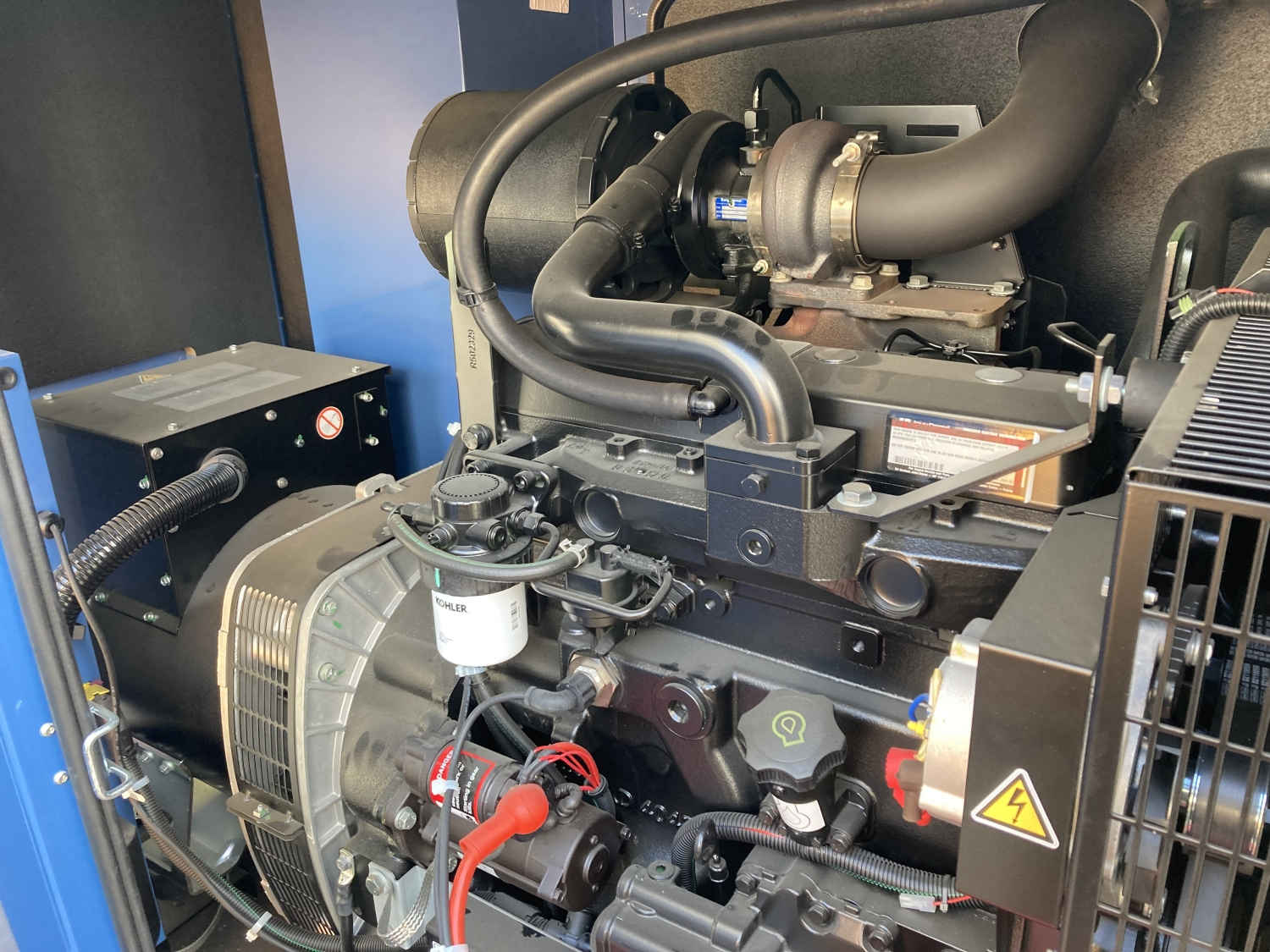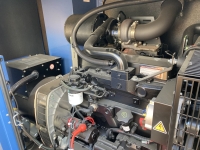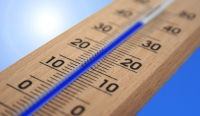Datacenter Backup Diesel Generators Winter Maintenance
Backup generators are vital for proper datacenter operation. Regular maintenance procedures are mandatory to ensure that your units will start smoothly and supply necessary power to your facilities.
The probability for power outages is higher during the winter season, due to possible overloading of the power grid in very cold days or after snow/wind storms and other natural disasters. Furthermore, internal combustion engines need special care at low ambient temperatures, especially during start up and warm up. Therefore in TSBG hosting ltd. we plan diesel generators maintenance just before the winter. October and November are the months, best suited for that.
Our team would like to share what you have to pay attention to and take care of to ensure that you are ready for the winter.
OIL CHANGE
Oil filter change is a regular maintenance procedure for any internal combustion engine. Generators are driven by diesel engines, on which you need to replace oil at regular intervals, as specified by the engine manufacturer. Usually this interval is 200-300 hours of operation. All our datacenters are designed with redundant power supply systems and grid power outages are rare. Therefore, the generators are not operating more than 50 hours per year. Anyway, the oil ages, even without engine being in operation. Changing oil at least once per year is recommended. Changing at longer intervals is acceptable only if a probe is taken and sent to a lab for evaluation. In any case, the price for changing oil is relatively low, compared to overall datacenter maintenance costs and the maintaining of good oil parameters by regular oil changes will ensure longer and trouble free operation of the engine and you will ensure that your generator will remain operational for many years ahead.
When replacing oil don’t forget to also change the oil filter and fuel filter as this is a recommended good practice. The air filter needs to be inspected and replaced if dirty or damaged. When the engine is not running the air filter is not collecting dust and it is acceptable to replace it at longer intervals. Please have in mind that the air filter conditions depend not only on the running hours of the engine but also on the environment. If it is too dusty or the filter is overheated or there was a leakage of water, oil or coolant over the filter, it may become compromised and prevent normal air flow or lose its filter capabilities.
If the air filter is blocked and can not provide necessary air flow the engine output power will be reduced and eventually the engine may not start. If the filter can not provide filtering of the engine incoming air, that may result in engine's damage.
Before the oil and filter replacement it is good to let the generator run for 15 minutes. That will warm up the oil and make it easier and faster to drain it from the engine. Bigger engines need more oil and draining itl sometimes takes a long time, especially when it is very cold.
Shut down the generator and block the automatic start. Consult with generator manual. The best way is to block the generator controls and disconnect the battery. Accidental generator start, during oil replacement may cause injuries and damage the engine.
Please pay attention to the environment. Always use an oil drain pan with sufficient capacity. Store used oil in plastic or steel containers and return it to a local recycling center. Avoid any leakages or spills.
In case of an oil spill do the following (be prepared with necessary materials before staring oil change):
- Sprinkle sawdust, clay kitty litter (not the clumping kind), coconut husks, or a commercial oil-absorbing product on the stain. If you have none of these products on hand, set paper towels to soak up any wet oil.
- Allow the absorbent materials to work on the oil for 24 to 48 hours. Then, sweep up the debris with a broom and dustpan.
- Repeat with fresh absorbent materials as needed to remove any remaining oil.
- Dispose debris properly-consult local recycling center.
- Clean the area with water and liquid soap.
Protect your eyes, skin and clothes.
Attention! The hot engine oil can burn your eyes and skin. Don’t attempt oil replacement if the generator was operational for a long time. Wait for the oil to cool down to 35 degrees C (95 degrees F).
After the oil is drained, close the drain opening and dismount the oil filter. Please note that there is a small amount of oil remained in the filter. Follow manufacturers manual how to remove and replace the oil filter. In most cases you will need a special tool.
Before fitting the new oil filter don’t forget to fill it with fresh oil. That will make engine start easier and minimize the time engine is running without oil during start up and filling of oil system.
Dispose old oil filter properly. Consult the local oil recycling center.
Fill the engine with fresh oil with grade and type as specified by manufacturer. Always use high quality oil. Quality of the engine oil is critical for engine life, cold start capabilities and even fuel consumption.
If the manufacturer recommends oil with different viscosity, select the one that best matches your local environment conditions during the period in between oil changes. An example chart is pictured below, but always use manufacturer maintenance manual.
If the generator is equipped with a canopy filling the engine oil may be difficult.
After the oil filter replacement, proceed with the fuel filter replacement. Usually the fuel filter is fitted by a bolt and no special tool is required. Consult engine maintenance manual. Please note that the old filter has some amount of fuel in it. Before fitting the new filter, fill it with fuel. That will ease engine start. If you need to detach fuel hoses, depending on the clamps, you may need a special clamp tool like the one shown on the picture
Attention! The engine fuels are highly flammable. Do not smoke and/or use fire and heating tools when working with fuels. Always protect your eyes, skin and clothes. Avoid fuel spill.
After replacing the fuel filter inspect and if necessary clean or replace the air filter. Small amounts of dirt can be sprayed with compressed air.
Fuel hoses and fuel system inspection
The rubber or plastic which fuel hoses are made out of ages with time. Carefully inspect all hoses from fuel tank to fuel pump, fuel filter and engine assembly. Sometimes small cracks appear in the fuel supply hoses. The cracks let air enter in the fuel hoses thus preventing necessary fuel flow. The result is that the engine operates normal when iddle, but when the generator is loaded the fuel flow is not enough to supply the necessary amount of fuel to the engine and the generator starts acting up as it is overloaded with uneven operation and drop in supply voltage. In fact the generator is unusable and diagnosing the problem is not easy and often incorrect.
If you find any problem with the fuel hose, replace all of them. The cost is minor and may save you a lot of troubles. Always use high quality hoses. Please note that sometimes the fuel hoses are from different manufacturers when it comes to those for the engine and the generator and one type can look OK but another type may be compromised.
Don’t forget to inspect and replace the additional fuel filter between fuel tank and the engine, if such additional filter is installed.
CHECK COOLANT
Engine coolant is a mixture of ethylene-glycol and water. Mixture ratio determines the freezing temperature of the coolant. It is a must to ensure that the freezing temperature of the coolant is lower than the lowest expected air temperature during the winter. Winter temperatures depend on geographic location but may vary a lot from year to year. Usually, the generator assembly contains a coolant heater to keep the engine warm and ease quick starting. Freezing of the coolant will surely cause severe damage of the engine. Therefore to be on the safe side, in any case keep freezing point of the coolant lower than -20 degrees C.
You can measure the freezing temperature with a simple and very useful tool, which we recommend to be added to the maintenance toolbox of every site, which has a backup diesel generators or any other device, driven by an internal combustion engine with a liquid cooling system.
Check freezing temperature of the coolant every autumn, before winter. During the test, check coolant color and transparency. If the coolant is dirty or unclear, drain the coolant and flush the system several times. Always use distilled water. The color of healthy engine coolant is green (for ethylene glycol) or orange (for Dexcool). A rusty color indicates that the rust inhibitor in the coolant has broken down and it can no longer control rust and scale buildup. A milky color indicates the presence of oil in the system. Orange coolant normally last longer than the green one.
Fill new coolant. After refilling, let the engine operate for 20 minutes and check freezing temperature again as some water, which has remained in the system may increase the freezing temperature, above acceptable limits.
Record the last coolant replacement date and plan coolant replacement every 3 years for blue and 5 years for red coolant. Don’t mix different types of antifreeze.
CHECK BATTERY
Engine battery is required to provide necessary current to start the engine. If not maintained properly or if the charging system is faulty, the battery may be damaged irreversibly. Even well maintained and properly charged, the battery capacity will reduce substantially after 5 years of operation and needs to be replaced. During the winter season, when cold, the diesel engine start is more difficult, due to the nature of the ignition process. At the same time battery capacity is reduced and can’t drive the necessary current to the engine starter motor, resulting in lower revolutions per minute.
The battery health is vital for the proper operation of the generator. It doesn’t matter how well your generator assembly is maintained if you have a faulty battery the engine will not start when expected.
First – check electrolyte level if you don’t have maintenance free battery. If necessary fill with distilled water.
Measuring battery voltage can only indicate the level of charging but can not determine battery capacity. You need to test the battery under load to evaluate its state. The best way to perform this is with a special battery tester tool as shown below:
The tool has a powerful resistor inside and can measure a battery voltage drop when a high current applied. This tool is not expensive and it is a valuable measuring device for every battery plant. For more advance measurements it is recommended to use an electronic device.
If the measurement shows that the battery is OK inspect the electrodes. Clean and apply a thin layer of vaseline, which will prevent corrosion. Also check battery compartment for electrolyte spill and rust. If necessary clean, prime and paint.
Replace battery if the measurement shows weak battery or if it is more than 5 years old. Install maintenance free battery with the same capacity. If the battery is older than 3 year make battery test every month or two. This will save you a lot of troubles.
CHECK COOLANT HEATER
Don't forget to check and if necessary adjust the coolant heater. Generator assemblies are equipped with a coolant heater, which keeps the engine warm and eases starting. During the winter it is very important to have this operational. Raplace faulty heater if necessary.
FILL FUEL TANK
Fill fuel tank to the top. Having enough fuel will guarantee operation of the unit for as long as possible. Revise your contracts for fuel delivery on the site.Larger generators require grand amount of fuel.
CHECK BELTS
Check all belts for cracks. Check tension. If necessary replace old belts.
TEST THE GENERATOR UNDER LOAD
At the end start the generator under load for at least 1 hour. During that period check the engine temperature, measure supplied voltage, check for alarms, strange noises and other abnormalities.




